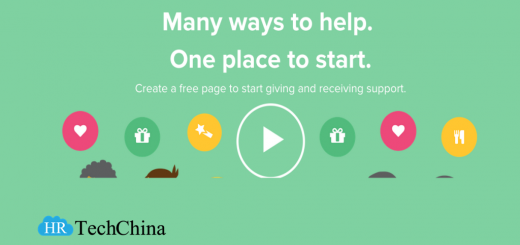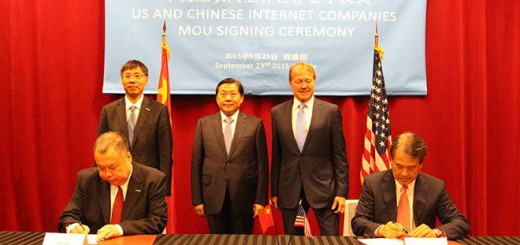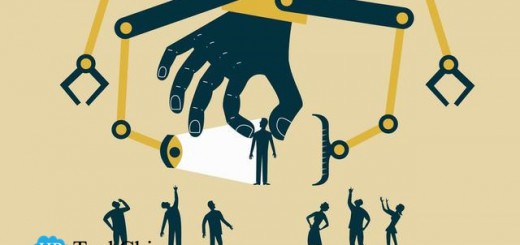-
 观点
观点
看了2015互联网招聘研究报告——企业不愁招人,人才不愁找工作!
据品途网观察,近两年中国互联网招聘市场正进入成熟发展期,市场规模稳步增长,创新型垂直招聘网站开始蚕食传统招聘网站市场份额。
第1章 绪论
1.1 研究背景
据品途网观察,近两年中国互联网招聘市场正进入成熟发展期,市场规模稳步增长,创新型垂直招聘网站开始蚕食传统招聘网站市场份额。据艾瑞咨询估算,2015 年中国招聘市场规模达到 44.3 亿,目前中国职场上约有 3.8 亿人之多 ;就中国 3000 多县市而言,每个地区平均需要数十万的工作机会,而中国的网民基数则早已超过 5.9 亿,中国约有 44% 的人在使用互联网,通过互联网寻找一份工作机会。
而互联网创业的火爆催生了无数新兴的就业机会,品途网作为互联网新媒体也见证了创业大潮。国家用“万众创业、万众创新和互联网+”鼓励创业,无数孵化器诞生,投资机构聚集,各种创业论坛、会议火爆。创业大环境催生了众多企业诞生。根据北京市工商局的统计,2015 年 7 月在实施“先照后证”改革后,企业办理营业执照平均时间成本缩短10 天,每月新增 16000 户企业,平均每 160 秒就有一家企业“出生”。无数企业的诞生促进了就业,找工作和跳槽成为常规现象。可以说,创业火爆成为了互联网招聘发展和繁荣的助推力量。
在创业繁荣的助推下,传统与新兴招聘两大派别已出现分水岭,传统网站在校园招聘、企业大型活动和人才库方面依旧占有绝对优势 ;新兴网站针对细分市场,重度垂直分类特征显著,如拉勾网、内推网等创业公司布局在互联网等各个垂直方向,58 同城、赶集成为蓝领
招聘领域的霸主,猎聘、猎上等网站侧重猎头端,LinkedIn、脉脉等则以社交为切入点占据一定市场份额。
万众创业、创新的热潮还在持续,成千上万的中小微型创业企业,对人才的需求给招聘行业的发展创造了良好的基础。而招聘行业的变革也成为创业型企业发掘人才的重要方式,两者之间的互惠互补,一个全新的移动互联网招聘新时代正在到来。
品途网研究员将众多互联网招聘划分为四种形式——互联网招聘的三大派系和企业自有渠道。综合招聘和互联网新兴的垂直类招聘以及以社交为核心衍生出来的招聘功能平台构成了目前互联网招聘的三大派系。而企业通过官方微信、官方微博和官网等自渠道进行招聘也成为了重要的招聘方式。本文主要研究的是前三种——除了企业自有渠道外的第三方招聘平台。
1.2 研究意义
本研究的意义有四点:1、践行O2O行业垂直化发展路线,研究互联网招聘行业的现状以及未来发展趋势。2、为企业用户提供有价值的人才招聘参考指南。3、给广大应聘者提供找工作的平台参考。
第2章 行业概况
2.1互联网招聘行业现状
2.1.1互联网招聘行业发展规模
根据易观智库的数据显示:2014年,中国互联网招聘市场规模达到32.4亿元人民币,与2013年相比增长19.1%。预计到2017年,市场规模将达到53.3亿元人民币,整体保持稳定增长态势。招聘市场规模逐年递增的原因有三:第一、近几年城镇化进程不断加快,城市劳动力增长较快;第二、投资火爆,创业热情高涨,劳动力买方市场和卖方市场共同繁荣造就了市场规模递增。第三、人才向一二线城市集中,人口的大规模迁徙造就了择业规模扩大。而年增长率逐年递减,体现了招聘市场有趋于稳定的趋势。可见,互联网招聘市场在随着城镇化进程和互联网的发展进行不断演进。
2.1.2我国招聘行业进入移动互联网时代
移动互联网大环境不仅催生了具体行业的移动化也促使招聘领域转向移动化。智能手机的普及使找工作和浏览职位信息变得更加即时性和碎片化,打破了过去在电脑前投简历和写简历的仪式化场景,促进了投递简历场景的多样化。移动互联网招聘使企业和个人更容易进行交流,并方便实时查阅招聘进度和进行招聘信息管理,提高了招聘的效率,促进了招聘的有效性交流,提升了用户满意度。
2.1.3垂直行业招聘成为不可逆转的行业趋势
垂直招聘网站在简历投逑效率、信息精准度方面具有明显优势,能大大提高互联网行业求职者的求职效率,因此逐渐成为互联网行业人才求职的首选网站。来自易观智库的部分统计数据显示:垂直招聘网站在提高互联网行业的简历投效率方面高于平台型招聘网站(如下图)。
简历投效率是指:求职者通过招聘网站收到面试通知的比例。比例越高,说明该网站的简历投递效率越高。主要原因是:垂直招聘平台对于企业和应聘者来说都比较精准,越精准企业越容易找到适合的人。
2.2 互联网招聘发展四个阶段
互联网招聘有将近20年的历史,它的发展可以总结为四个阶段。
萌芽期(1997年—2007年):招聘行业是比较早就进入互联网领域的,第一家互联网招聘——智联招聘成立于1997年是国内最早、最专业的人力资源服务商之一。智联招聘的前身是1994年创建的猎头公司智联 (Alliance)公司。这一个阶段互联网的家庭普及率正逐年攀升,城镇化加速,人口迁移率加大,招聘网站在不同区域纷纷涌现,但是网站功能同质化较为严重,信息繁杂有效招聘信息较少。这个阶段的线下招聘还处于强势阶段,线上招聘处于弱势阶段。
混沌期(2008年—2012年)这一阶段以PC为基础。在经历了2008年金融危机的打击后,互联网招聘十分萧条,一些互联网招聘公司退出历史舞台。而一些分类信息平台因其信息的全面性和高流量在互联网招聘领域脱颖而出,代表为:58同城。
高速发展期期(2013年—2015年)这一阶段移动互联网加快布局各个行业,互联网招聘市场处于高速发展期,不同类型的垂直招聘网站、定制招聘功能纷纷产生,互联网创新思维在招聘领域不断延伸。投资人和创业者纷纷进入这个领域,助推了互联网招聘创业的发展。
应用成熟期(2015年—未来)这一阶段。利用大数据进行人才的分类管理,推送更有针对性也更加精确的招聘信息。将会更好的实现便捷招聘,方便企业找到合适的人方便应聘者找到匹配的企业。建立在社交基础上的招聘比重将扩大,企业招聘成本降低。
2.3 资本市场对互联网招聘的影响
从投资的大环境来说,投资和创业热潮催生了众多互联网高薪职业——产品经理、运营总监、技术员等职业成为互联网招聘的香饽饽,高薪成为了当前互联网招聘的普遍现象。这是资本助推互联网招聘的一个体现。另外根据品途网对照品行业的盘点来看,本次报告总共盘点了32家企业,其中上市两家,被收购1家。融资成功的有16家,将近一半。可见垂直类创新型互联网招聘公司比较受投资人的关注。
第3章 用户特征
3.1 企业互联网招聘特征
企业对人才的要求越来越多元化,为了提高招聘效率获得更多应聘者信息,企业招聘的形式也多种多样,从线上来看主要有3种方式:选择网络招聘平台、利用社交网络和自渠道招聘。
根据易观智库的数据显示:目前,所有企业招聘中智联招聘具有领先优势,互联网企业招聘中拉勾网具有领先优势。究其原因:垂直平台因其信息的丰富性和庞大的用户基础是传统行业招聘的首选;创新型垂直招聘平台在提高企业招聘的精准度和效率方面具有领先优势,企业尤其是互联网企业逐渐将其作为招聘首选。未来,垂直行业招聘也在年增加,这也是未来招聘行业的发展趋势之一。
3.2 互联网求职者特征
互联网求职者分为传统企业求职者和互联网企业求职者。在传统企业求职中平台型招聘网站因其信息的全面性而占优。近几年互联网创业的爆发造就了庞大的互联网从业群体,他们成为新兴的互联网招聘网站的主力。根据百度统计数据显示:中国有互联网从业者5千万左右,可以说庞大的互联网从业人群催生了互联网招聘的繁荣景象。然而,互联网从业者供需较为紧张,人员流动率较高。
拉勾网的统计数据显示:从2014年开始,互联网从业者一直处于供需紧张状态,供需紧张指数虽然成波动状态,但还处于求职者市场。人才稀缺成企业发展最大瓶颈,企业对于人才的渴求催生了频繁的互联网跳槽现象。
拉勾网数据显示:中国互联网行业从业者每18个月换一次工作。较高的跳槽频率也成为互联网招聘市场火爆的另一诱因。
此外,历经十余年中国互联网公司已实现多元多样发展,移动互联网、电子商务、互联网金融等新模式催生新一波创业浪潮。高薪职位频出,各种创新行业兴起提升了互联网公司对传统行业人才的需求,互联网变得更为有吸引力和吸纳力。传统行业从业者向互联网行业转移也成为互联网招聘火热的原因之一。随着信息化不断深入,传统企业向信息化转型,互联网从业者将进一步扩大,更加催生互联网垂直招聘平台的发展。
第4章 案例解读
4.1招聘综合平台
招聘平台分为分类信息平台和综合招聘网站。
分类信息平台是指,对不同品类信息进行划分的互联网平台。例如,58同城提供找房子、找工作、二手物品买卖、交友等多种生活信息。其中找工作只是平台提供的功能之一。
综合招聘网站是指,提供一站式专业人力资源服务,包括网络招聘、报纸招聘、校园招聘、猎头服务、招聘外包、企业培训以及人才测评等。代表为智联招聘。
4.1.1案例分析
智联招聘网为个人用户提供网上求职、简历中心、求职指导等个性化服务;为企业客户提供以网络招聘为核心的人才解决方案。无论是求职者还是企业HR都可以获得智联招聘提供的专业人才招聘服务。除此之外,智联招聘还提供报纸招聘服务、猎头服务、培训服务和校园招聘服务。
最近智联招聘布局移动互联网推出依托招聘行业缓解就业难的产品—— “反馈通”。反馈通”于2015年7月推出市场,用以建立企业对求职者、求职者对企业的评价和信用体系的产品。其透明化求职流程,满足求职和招聘双方的需求,提升了对于求职流程管理的效率,也加快找工作、找人的速度。
4.1.2模式分析
传统的招聘网站的盈利模式主要来源于五种方式:1、企业会员费2、现场招聘会3、企业广告费4、分站加盟费5、企业增值服务费(包括企业宣传等)。以智联招聘为例,品途网研究分析了它的四种盈利模式:第一、企业会员费:向网络招聘的企业收取一定的会员费以提高企业的知名度,同时给企业推送优秀人才信息。第二、企业推广费:智联每周推出专业的《智联招聘周刊》,成为各城市最为专业的招聘周刊之一。《智联招聘周刊》一周七天不间断在当地千余家书报摊亭发放,在百余座商务写字楼,白领消费场所免费赠阅,并在当地的人才市场,高等院校,外来人口聚集地等热点地区免费派发,并收取一定的广告费。第三、猎头费:智联猎头是中国最早的外资猎头公司之一。智联猎头业务遍布全国,已经在北京、上海、天津、深圳、南京、成都、苏州等城市设有猎头部。通过向企业介绍优秀高素质人才收取企业费用。四、培训服务费:智联培训服务范围包括公开课、认证、企业内训及人才测评,已经为大量跨国公司、民营企业、国有企业及其员工提供了非常有针对性的培训方案与课程体系,并收取相关的培训费用。
综合平台未来的发展趋势也是布局移动互联网。随着移动互联网不断发展,传统PC时代的互联网产品不断被蚕食,平台型招聘网站面临转型境地。信息大爆发时代,传统的广而全弊端凸显,信息化精准推荐在招聘领域则显得更加重要。此外,招聘平台不仅推出各种移动端招聘衍生产品,招聘综合平台也以招聘为切入点将触角伸得的更长,布局生活服务领域。例如,58同城推出58到家等。可见,传统招聘平台还需要更多创新才能保持住自己的传统优势。
4.2 垂直职业招聘型
互联网行业的火爆催生了互联网垂直招聘行业。互联网招聘、金融招聘、校园兼职招聘异常火爆。垂直职业招聘主要是按行业或者人群划分、以特定职业人群为服务对象的招聘网站。以互联网从业者为招聘对象的拉勾网,以电商群体为招聘对象的电猴网。下图为部分垂直招聘网站。
4.2.1案例分析
拉勾网,是一家专为互联网从业者提供工作机会的招聘网站。拉勾网专注于在为求职者提供更人性化、专业化服务的同时,降低企业端寻觅良才的时间和成本。在拉勾网,每一次投递都会收到企业的明确回应,最快回应时间仅为1分钟。拉勾网的”24小时极速入职”,彻底颠覆了“投简历石沉大海”的国民痛点。由于精准的职位匹配,求职者平均每8次投递就会收到一次优质面试机会。拉勾网以速度快、薪资透明和职位选择多著称。目前拉勾网还上线了垂直金融领域招聘的服务平台,成为国内第一个切入金融领域的垂直招聘网站。
4.2.2 模式分析
目前垂直招聘网站的火爆主要有以下几点原因:第一、互联网行业的火热。第二、传统招聘网站效率低下。第三、垂直网站职位推送更加精准,效率更高。
互联网招聘很火,但盈利模式作为不可回避的问题同样为人们关注。品途网研究院梳理了垂直类互联网招聘的集中可能得盈利模式1、会员费用,收取会员费用提供增值服务2、为企业提供置顶、搜索的优先排名3、首页的广告位等在信息层面增添曝光率4、帮企业策划推广活动。从盈利模式来说,目前的垂直招聘网站与传统平台行招聘网站并无实质差异。但垂直网站目前还处于拓展阶段,盈利暂时不是主要目的。垂直型网站的最终目的还是要以垂直为切入点,然后不断打造网络招聘的新生态,才能够走出垂直招聘领域的商业模式天花板。
4.3 社交招聘型
社交招聘型是建立在社交基础或者进行社交强引入的招聘网站。以脉脉为首的垂直类人脉软件带动了新一波垂直社交浪潮。而通过社交不断生发出来的文字、视频、等功能在招聘领域的创新应用也值得关注。此平台分为社交网络招聘和以社交为核心的招聘网站。
社交网络招聘是指基于社交网络信息化和快捷沟通基础上的招聘,以脉脉为例其社交功能大于招聘功能。以社交为基础的招聘网站则是以招聘为最终目的,引入强社交环节,让企业和应聘者事实方便沟通。目前建立强社交场景主打招聘的产品有Boss直聘。
4.3.1 案例分析
Boss直聘是一款让职场Boss与求职者在线聊天、加快面试的免费招聘手机软件。企业HR、用人Boss、求职者,都可以线上了解双方情况,直接在线语音开聊。Boss 直聘”分为面向求职者的” 牛人版 “和面向老板的” Boss 版 “。“牛人版” 中用户完善自己的学历、工作经历等基本资料后,即可浏览职位,勾引老板;同样的,“Boss 版” 中老板填入姓名、公司邮箱等信息即可发布职位、勾搭牛人。系统会按照用户的行业、职能、职级对双方进行三级匹配。同时,“牛人版” 和 “Boss 版” 信息打通,用户可以随时切换。
4.3.2 模式分析
社交网站应用到招聘领域就是六度空间理论的实践。六度空间理论指出:你和任何一个陌生人之间所间隔的人不会超过六个,也就是说,最多通过五个中间人你就能够认识任何一个陌生人。这就是六度分割理论,也叫小世界理论。这样招聘者甚至可以免去猎头的费用,切入的是猎头公司蛋糕,找到任何一个企业需要的人。人与人之间的社交模式让招聘更加人性化,但是目前行业处于用户培养阶段,没有明确的盈利模式。
结论:垂直招聘成行业突破口,社交成招聘发展前景广阔。
1、移动互联网化招聘趋势明显
传统的PC端已经不能满足用户实时投递简历和查阅进程的需求。再加上招聘过程中的社交场景引入,导致移动端招聘的市场规模不断扩大,进而使发端于PC时代的招聘平台不得不面临转型以不断适应移动端市场的扩大。
2、网络招聘市场已进入细分时代,传统招聘综合平台面临创新转型
2013年至今中国网络垂直招聘产业处于快速成长期,市场集中度提高,服务和市场日趋细分。在移动互联网招聘市场的细分时代,传统招聘综合平台要健康成长,必须学会放弃,瞄准细分市场,寻求人才网站的差异化定位,贴近用户,通过差异营销占领终端。
3、细分市场:细分不是目的 整合才是关键
大型综合招聘网站的市场地位较稳定,新进入者很难再通过相同的策略实现超越。他们另辟蹊径以面向细分市场的模式进行高效率和精准定位,达到了快速打开市场的目的。以拉勾网为例,短短两年时间在互联网领域迅速打开局面,打响知名度。垂直领域招聘先以专业化的服务粘住用户,再通过分行业联盟的纵向拓展来迅速扩大用户规模,而且这样取得的市场份额也将是比较稳固的。
虽然每个细分市场都会有相对较高的效率,但在市场份额已被前程无忧等大型综合人才网站占去一半以上比例的前提下,专注单一细分市场很难产生大的规模。从长远发展来看,细分只是策略,基于各个高效的细分市场的有效整合才是最终目标,如何使得各个细分市场发挥相乘效应而不是简单叠加才是更重要的。
4、社交场景将在招聘环节中不断扩大
社交型招聘不仅可以降低企业的招聘成本还可以提升企业的招聘效率。企业不仅可以通过社交网站进行应聘者背景调查还可以通过招聘网站寻求更多优质推荐。实时的沟通也是招聘领域的一个创新。未来,社交场景将在招聘环节中不断扩大,超越招聘功能成为行业交流社区。
5、大数据应用在人才招娉和管理领域
随着大数据在互联网领域的广泛应用,招聘领域将与大数据融合,采集互联网中公开的专利、论文,简历和社交数据,建立求职者的人才画像,结合企业的招聘需求,采用大数据分析技术主动为企业推荐合适的候选人。企业发布职位后,系统智能将人才精准定位,秒级推送给企业,企业不用再苦等人才上门,将靠数据寻找人才。
附:互联网招聘企业名录(32家)
来源:品途网
作者:尹天琦
链接:http://www.pintu360.com/article/5608b90d4c2b2eb63ab38a44.html
-
 观点
观点
蓝领人群市场的故事很美,但落地时这些问题无法回避
编者按:本文作者徐江疆,供职于创新公园,是一位关注蓝领市场、农业市场以及城市中老年人市场的 “非主流” 天使投资人,微信号 18761790211 欢迎交流。
自从,张子陶博士发表过《白领招聘已饱和,蓝领招聘还空着呢》之后,陆续在媒体有了一些关于蓝领人群市场的讨论。作为一个对蓝领人群市场(本文中的蓝领人群是指东部长三角和珠三角两地的制造业蓝领人群)的关注者,我非常乐见创业者积极投身于服务蓝领人群的市场中来,资本市场也对这块市场表露了兴趣和关注。不过作为一个该领域的亲历者,我还是想对许多志于在该领域创业的朋友们提个醒,也许蓝领人群市场的故事很美,但当把故事落地的时候依然有许多绕不过的坑。
大环境的不确定性
今年中国的经济形势到底怎样,未来又会怎样?要回答这两个问题,与其说是经济问题,倒不如说是哲学问题,关乎对于中国未来的信仰。每个人都有自己的判断,而标准答案,则要时间翻过这一页,才会揭晓。未来就像薛定谔的猫,生死未卜。
因为经济大环境的不确定性,与蓝领人群息息相关大的制造业的前景也是难以预测。如果,那些投身于蓝领招聘的创业者,费劲千辛万苦获取了海量的蓝领人群作为人力供给,但是工厂端的招聘需求大幅萎缩,创业者要如何承受这当头一击;而致力于蓝领人群消费升级的创业者,费劲千辛万苦在蓝领人群人群的聚集区找到了一个落脚点,但是却受到了工厂向海外转移、关张等一系列不可控因素,导致蓝领人群也从临近工厂的聚集区四散而走,创业者又要如何面对这致命伤。
以上所列举的只是极端情况,虽然今年的经济基本面不好,GDP 增长预期的调低,PMI 一直都在荣枯值之下,人力成本的持续上升等因素都给蓝领聚集的制造业带来沉重压力,不过乐观的是根据本人上半年的观察,以长三角和珠三角中以大型制造企业为主的聚集区域,大型企业的招工需求平稳,随着进入年末,招工需求依然旺盛,就今年的形式来看,最坏的状况似乎已经过去。但是明年的形式是怎样,依旧难以预估,毕竟市场是不可预期的。作为一个蓝领领域内的创业者,在对市场的敬畏中保持着清醒的头脑将风险把握在可控范围之内也许是比满腔情怀要改变世界更加重要的事儿。
隐性门槛高竞争激烈残酷
蓝领人群市场的准入门是高是低?这个问题就好像小马驹过河,也许永远都没有一个标准答案。
好吧,我不得不承认,切入蓝领人群消费市场的,除了极个别的领域外,比如住房领域,的确不存在什么门槛。如果说切入蓝领消费市场的创业者面临的准备门槛和市场竞争最多是一堵长城,那么切入蓝领招聘市场的朋友们直接面临一座珠穆朗玛。每一个在该领域创业的朋友,都是了不起的登山者,你很难预测登顶和意外到底哪一个会先来。
蓝领招聘是个很古老的行当,在现代文明发迹之前,从奴隶主到黑奴交易我们都能看见蓝领招聘的影子。我无意将蓝领招聘和黑奴交易比为一码事儿,相反当蓝领招聘服务主体是蓝领人群时,服务于蓝领人群的找工作的需求,蓝领招聘服务恰巧可令蓝领工作者们免于悲惨境遇同时也能够满足优质企业的用工需求。如果蓝领招聘项目服务主体是满足企业招工需求的话,我并不想从商业伦理的角度展开,从商业逻辑上来看,这样的蓝领招聘与一般的劳务中介并无差别,即便从招聘方法上引入了互联网,又与 58 和赶集的蓝领招聘区分度不大,并且蓝领人群的用户体验度仍然难以提高。毕竟蓝领人群的找工作的需求,与企业的用工需求是不一样的。
但是不管是服务哪个主体的蓝领招聘项目,只要切入了蓝领招聘市场,都必然会动到传统劳务中介的奶酪。毕竟招聘服务无法创造招聘需求,只能满足招聘需求。任何一方的介入招聘市场,都没有办法做出一块招聘市场的增量蛋糕,都是从招聘市场的存量蛋糕上切下一块,也就是对招聘需求资源的再分配,同现存的劳务中介的竞争是不可避免的。
坦诚地说,对于蓝领招聘项目来说如果服务主体是工厂,帮助工厂解决用工需求,那么面对线上 58 赶集的流量竞争,面对线下的劳务中介都是直接竞争的状态,在这样的状态下能切入招聘渠道都很不易,更是遑论拓宽渠道进行复制了。这也许一定程度上解释了,为什么蓝领招聘难以复制的一个原因。但如果服务主体是蓝领人群,满足他们找工作的需求,虽然对接的依旧是企业,还是要帮助企业解决招工问题。不过从商业逻辑上来推导,在保证蓝领人群体验度的情况下,是可能将原本出于竞争关系的劳务公司变成招聘企业下游服务商的。在保证用户粘性的前提下,形成了这样的服务链,复制的意义也就得以显现。(如果以上论断有误,欢迎前来打脸)
用了这写篇幅来说蓝领招聘,其实我还是想对任何想要切入蓝领市场的创业者提一个醒,首先不要高估竞争对手的商业道德,其次不要低估竞争对手的竞争手段。市场既不因创始人有着高尚的商业道德而降下了准入的门槛,也不因创始人怀抱着普世的情怀就减弱了竞争的烈度。
管理指标流于虚荣指标
任何一家公司在创立之初,就会设定自己的商业模式,对未来的收益、支出以及用户增长数等做出自己的判断和预期,在没有执行落地前这些都只是空手画出的大饼。衡量一家初创团队的好坏,画大饼说故事的能力很重要,但是更重要的还是需要一些关键性的指标来衡量的。
一般的互联网公司,在设计自己增长模型的时候,都会采用 “AARRR” 的漏洞模型,具体模型我不再赘述。模型内涉及的 5 个环节,简单地说就是:1.流量获取,2.流量激活,3.流量留存,4.流量变现,5.流量再次传播。一般来说,一个完整的商业闭环,一定会涉及到这 5 个环节。当然因为公司的性质不同,每个环节的侧重也都不尽相同。换句话说,每个公司的增长引擎是不同的。自然地来讲,每家公司衡量自己的产品的核心指标也是不尽相同的。
举例来说吧,有一些想做蓝领招聘的创业者想从先从社交的方向切入。根据去年流行的降维攻击等一系列 “互联网思维假说” 来判断,从高频的社交切入低频的招聘,这是高频打低频,一打一个准啊,但遗憾的是这种一打一个准的假说还没有得到现实的验证。单从商业逻辑上来判断,做社交和做招聘,根本就是两个完全不同的商业模式。从社交切入招聘的想法,实际上是把招聘当成了社交的变现方式。社交重线上招聘重线下,考核的指标也都不尽相同,同时把这两件事情一起跑通,把团队制定的指标都一起完成,对于团队在资源上的配置要求,对于团队人员构成的要求可能远远的超出了该模式设计者的想象。如果撇开线上引流的到招聘服务的转化率不谈,撇开流量获取成本不谈,撇开用户留存率不谈撇开系列相关的核心指标不谈,从社交切入蓝领招聘就是在说一个并不高明的故事罢了。(如果以上论断有误,欢迎前来打脸)悲观的来说,对于一家初创团队,要同时满足这二者的要求,绝对是不可能完成的任务。如果从社交切入招聘的要求不高,转化容易的话,那么腾讯和 Facebook 肯定可以跻身于世界最大的人力资源公司。(如果以上论断有误,欢迎前来打脸)话题还是回到虚荣指标的误区上来。如果有一家做蓝领招聘的团队,战略的重心没有放在提高送厂人数等关键性指标,而是将精力和资源过多的投放在比如说注册用户总数、活跃用户总数等空泛的指标上,可能就已经误入了虚荣指标的歧途。(如果以上论断有误,欢迎前来打脸)当然为了提高关键指标,一定是需要把关键性的指标在每一个流程中进行分解。正如埃里克莱斯在《精益创业》中说的那样,每一个指标都必须要具备以下三种条件:1.可执行性,2.可使用性,3.可审查性。
然而指标是死的,公司必须是活的。用了虚荣指标来对公司进行管理和指导,可能比不用效果来的更差。不同的的商业模式适用不同的关键指标,公司所出于不同的时期,所适用的指标也是不同的。创始团队必须精准的找到真正的关键性指标,而不是沉溺于某几项非关键性指标的增长,毕竟所有的指标如果没有进行及时的梳理和调整,都有成为虚荣指标的趋势。
对于创始人严苛要求
蓝领领域内的创业因为服务人群在社会分工中处于相对弱势的地位,面对这类人群的服务多少都具备一定的公益性,但创业始终不是慈善业,无法体现出商业价值,也不能算是一个优秀项目。这就要求创业者还是把自己定义为一个企业家而不是一个慈善家,一定要注重商业逻辑而不是慈善的情怀。
传统管理学上,企业家分为两种,狐狸型(Fox)的企业家和刺猬型(Hedgehog) 的企业家。狐狸型的企业家因为对于未来大趋势的战略不确定,所以长于从战术采取随机应变的手段;而刺猬型的企业家最对于未来的大趋势战略上有着清晰地判断,为了达成终极的目标,从深度上去达成最终的目标。实质上,这两种企业家都是通过精益求精的手段去实现成功。因此我无意对这两种企业家做出一个优劣判断。但很忌讳的就是,如果一个创始人,在战略上没有明确目标,在战术上又缺乏随机应变的能力,态度上也没有秉持精益求精的理念,那么就会沦为猪型(Hog) 企业家,这可能是已知所有企业家中最危险的一种形态。
在面向蓝领人群的市场内创业,的确在很多领域都是高准入门槛,高资源要求。但是启动资源的多寡始终不是决定一个创业项目成功的最关键性因素。能够拥有持续获取资源并能够不断提高资源利用率的能力的创始人才是最理想的。随着市场的开放程度日益提升,竞争激烈程度的加剧,将自身竞争力建立在不可复制的资源基础之上的创始人,也身处于一个危险的境地。
这些年互联网的发展,互联网公司也培养出了各类的优秀人才。我非常欣赏增长黑客这一类的人才,也高度赞同他们的工作方法。虽然蓝领人群市场是一片很广袤的大市场,但是很多领域还没有出于充分市场竞争的状态,行业内的利益关系还很复杂,蓝领人群的用网习惯还不理想,切入这个市场,深入蓝领人群找准方向也许是找准切入点的最好的方式。
张爱玲曾经说过,生命是一席华丽的袍子,上面爬满蚤子。其实,创业也应如此。蓝领人群市场的蚤子也许还更大一些。不过创业本就是用有限的资源去编织华丽的袍子,应对无限的蚤子,如果没有梦想,谁还会去做这些?最后祝每一个创业者都梦想成真。
本文来自读者投稿,不代表HRTechChina 立场
来源:36氪
-
 观点
观点
互联网招聘走向三足鼎立,该如何突出重围?
摘要: 猎聘网、拉勾网、智联卓聘在高端人才市场已取得暂时领先的地位,但是高端人才市场面临的诸多痛点,谁能一一解扣,势必是未来可以冲出重围的重要砝码。
近日,整个网络在线招聘市场都在流传着一个非常奇怪的现象:先是猎聘网推出了声势浩大的“非凡雇主”活动,并邀请了百度、京东、海尔等多家明星企业,随后有关猎聘网的广告进而开始在北京多个地铁站漫天飞舞;不过拉勾网表示了极大的不服气,随即推出了“实力派-梦想升值季”的活动,并刷爆了整个朋友圈。猎聘与拉勾谁都不服谁,你争我抢,企图通过文字游戏来吸引众多用户以及媒体的注意。不可否认,这种砸钱炒作的行为对于平台的曝光度起到了一定的作用,但是真的对于整个在线网络招聘的健康发展就好吗?
我们先站在这类招聘平台上的企业角度来看待广告宣传,在线招聘网站一方面帮助企业在招聘人才,但同时猎聘、拉勾的广告语又鼓励职场人士踊跃跳槽,让大家选择更好的工作。这样岂不是矛盾吗?一方面,让职场人士跳槽,企业失去了现有的员工;另一方面,企业失去了现有员工,然后又来借助这类招聘平台招聘人才。也就是说,在线招聘平台的这类广告宣传实际上是在让企业员工离职跳槽,然后又来赚企业的钱。
其次,我们从求职者的角度来看。在线网络招聘平台鼓励求职者找到更好地工作,鼓励他们不断的跳槽,确实是让平台的招聘效率暂时提升了,但是对于求职者的人生规划就真的好吗?人往高处走水往低处流,这个确实不假,但是对于很多在职人士来说,他们更多的需要是人生的积累和准确的定位,而不一定只是高工资、高职位。相反,倒是那些经常跳来跳去的员工,最后永远都只是停留在公司的中低层岗位。一个职场人士每到一个新的公司,需要适应新的环境,如果换行业甚至还需要从头开始,这对于求职者来说并不是一件好事。
最后,对于平台自身而言,也不见得完全都是好事。从平台的短期发展来看,通过借助文字游戏的炒作,确实会给平台带来一定的宣传作用。但是任何企业做事情都会顾此失彼,这个地方投入了更多的精力,在别的地方必然会有所减弱。在线招聘平台在广告上投入了更多的时间、精力、成本,在企业服务与求职者服务上必然会有所减弱,不重视服务而一味地追求广告炒作,对平台的长期发展是相当不利的。
从上面的简单分析我们可以看出,网络招聘的重心不应该放在广告上,而是应该落实在服务上。如何改变现有的招聘服务格局、服务思路是在线网络招聘平台们真正需要去好好思考的。
高端招聘市场走向三足鼎立
高端人才市场正在成为各大招聘网站争夺的焦点,除去智联招聘、前程无忧、中华英才这三大传统的招聘网站不算,高端人才市场当前也正在走向新的三足鼎立时代。
猎聘网凭借着占据市场先机获得了高端市场的地位:猎聘网从一开始就选择了进军高端市场,并试图打造一个连接企业雇主与猎头的平台,解决双方的信息不对称问题。从需求的角度来看,猎聘网抓住了目前国内的猎头资源散乱、缺乏统一整合平台的市场痛点,并在高端人才市场迅速站稳了脚跟,占据了市场先机。
智联卓聘借助智联招聘的资源以及创新的模式得到了认可:智联卓聘是智联招聘针对中高端人才市场所推出的子品牌,它通过借助智联招聘的基础,整合覆盖到了40多个行业的优质资源。智联卓聘定位于月薪万元以上的职场精英人士,帮助他们找到与之匹配的职场岗位,而智联卓聘能够在短时间占据高端招聘市场三强,最核心的因素就是因为专注,所以服务也更专业。
拉勾网得益于专注以及互联网兴起的大好时机迅速占领了高地:拉勾网专注于互联网领域的招聘,通过与国内的互联网公司达成合作,同时赶上了国内互联网公司迅速发展,都急缺人才的大好时机。
高端人才市场是争夺重心,却痛点多多
对于求职者而言,找到一个匹配的工作是其人生发展的重要环节;对于企业而言,任何时候都不会缺人,但任何时候都缺人才,找到合适的人才对于企业的发展至关重要,足见高端人才市场的重要性。但是当前的在线高端人才招聘市场却仍然存在着诸多痛点,阻碍着高端人才市场的发展。
痛点一:目前整个在线人才市场存在着这样一种现状:各个企业人力资源部的邮箱都不缺简历,却都缺适合企业自已的简历。这中间就反应了一个问题:简历有效匹配的问题。很多在线招聘平台都会给企业智能推送一些简历,可是他们只是注重数量,盲目收集很多无效甚至过时的简历推送给企业,以此来获取利润。
痛点二:高端人才的招聘,往往是通过猎头,朋友介绍等方式进行。大部分职场精英们,在选择平台的时候,除了职位的匹配性之外,更看重企业信息的准确程度以及与未来老板的契合度。因为,“职场社交”成为了网络招聘领域的“热词”。虽然在此过程中,有很多带着“职场社交”宣传口号的网站层出不穷,希望于此走出一条创新的职场招聘新模式。同时,随着linkedin的入华,也使得整个职场社交行业连同资本都再次热了起来。然而,一直以来,职场社交有一个致命的短板:他们并没有职场的招聘执照。这或许是很多网络招聘企业发展的最大“瓶颈”。
痛点三:很多招聘网站为了获得更多的人才简历或者成功率,将不少职位虚拟化,过度包装,由此造成很多职场精英跳槽后,发现与之前的预期具有较大差距。同时,很多应聘者的简历也会出现包装过度的情况,造成到了新岗位后,与上级领导要求差距甚远,频频跳槽的情况。
总体看来,猎聘网、拉勾网、智联卓聘在高端人才市场已取得暂时领先的地位,但是高端人才市场面临的诸多痛点,谁能一一解扣,势必是未来可以冲出重围的重要砝码。如果只是一味地借助广告宣传、文字游戏等嘘头来炒作,而不去脚踏实地做好服务,最终市场格局定然会重新改写。
【作者介绍:刘旷,微信公众号:liukuang110,
来源:钛媒体 链接:http://www.tmtpost.com/1441737.html】
-
 观点
观点
GiveForward如何凭借出色企业文化华丽转身
编者注:GiveForward是一个专门为家人和朋友募集资金的集资平台。公司三轮融资总金额为250万美元。
现在当谈到大企业文化应该是什么样子时,我们立即会想到Austin。和之前的许多创企一样,GiveForward给员工提供了无数的假期以及继续教育的机会。不同的是,GiveForward还举办了多场公司户外活动,在这些户外活动期间员工们是禁止谈论工作的。
今年,GiveForward举办过吃玉米卷大赛,手绘节日卡片活动以及划船活动。但这些娱乐背后是在游戏过程中越来越深的公司文化所带来的生产力提高——GiveForward的45名员工从上百万捐赠者手里募集了近2亿美元的捐款来给自己爱的人支付医疗急救费用。
在科技界,企业文化已经成了玩具枪,乒乓球和无数零食的代名词,也是留住员工的必须开销,但很少有创企敢说公司文化会怎样直接影响实际商业行为。在此次独家采访中,Austin向我们列举了GiveForward的企业文化是如何在四个方面显示出其竞争优势的:招聘,留住员工,融资以及合作关系。
上图为公司联合创始人Ethan Austin
招聘
Cars.com的运营副总裁,Grubhub的CTO兼用户体验主管兼品牌营销的高级主管,Groupon以及奥巴马竞选团队的行政主管——这些人既不是GiveForward的董事会成员,也不是GiveForward的咨询会委员,他们的相同点在于纷纷离开了旧组织,加入GiveForward成了全职员工。“我觉得企业文化在招聘员工方面绝对起了很大的作用,”Austin说。
许多公司错误地认为他们的企业文化会在第一次面试、入职或员工工作的第一周期间展露无遗,但Austin深知人们对一个公司的第一印象远比这些要早。“招聘不像亲自会面某人。不管你能不能接受,候选人对你的第一印象甚至在你见他们之前就已经形成了,”Austin说。“这就是为什么我们对外要将岗位说明写得那么‘奇怪’。”
——对于一份提案来说,奇怪又喧闹是好事,奇怪却安静则会导致失败。
怎样个奇怪法?以下节选自GiveForward的岗位说明,这份岗位说明向我们展示了如何在描述职位时带上自家公司的特点:
语言描述文化
“我们将客户放在至高无上的位置,我们相信带入同情心会对科技产生巨大影响。”
“我们重视是共鸣而不是自负,是才能而不是头衔,是合作而不是程式。”
“这是一次在新兴发展的文化中做出巨大影响的机会,也是巩固我们作为行业领导者地位的机会。”
“最棒的是,你的专业技能会转变为我们创造的产品,为人们的生活带来实质改变。”
语言展示文化
岗位说明中要包括能够对文化进行展示的事例。如:“这是我们做的东西,这是我们为什么要做这些东西。去年我们向世界展示了爱永远会战胜暴力,诚实是最佳选择以及如果1000个陌生人决定让爱传出去,生活将展现它奥妙的一面。”
解释公司的价值观及箴言:以GiveForward为例,它想向人们传递“真实”的核心价值观以及“奇怪是好事”的箴言。
大多数人认为岗位说明是对外的一种要求。但GiveForward将这一关系转换了过来,变成了将公司的履历表贴出去以寻求最佳职位候选人。而通过向外传达公司的核心价值观——真实,乐趣,同情心及授权自由,GiveForward让求职者在申请职位之前能够进行自我判定。这一举措让招聘对于每个与之相关的人来说都变得更高效方便。
奇怪的岗位说明为我们筛除了古板无聊的人,带来了我们期望中的奇怪、有趣又创造力十足的人。
当求职者收到GiveForward的入职信时,团队会利用公司文化来笼络他们。“我们会给最终候选人列一个‘Letterman Top Ten’(美国电视节目Late Show with David Letterman中的常规部分,围绕某一主题写10件事)清单,这份清单会向候选者列出他们应当加入我们公司的几大理由,”Austin说。“我们是根据我们作为求职者的经验以及公司任务、愿景、价值观的各个方面来列的这个清单。我们想让求职者知道我们已经了解他们了,同时,我们也利用这个机会再次提醒求职者我们是谁。”
多年来事实证明,top ten清单成了GiveForward最有力的招聘工具之一(下图为举例)。“我觉得人们都想加入一个有清晰的目标和愿景的初创企业。希望每天的工作能给他们带来启发,”Austin说。
“我们听说有求职者将这些清单拿给他们的父母或配偶看,还会自豪地说‘嘿,我要进的就是这家公司。’如果他们处在观望当中,这封信通常能够促使他们下定决心加入我们。渐渐地,人们加入我们公司的原因就变成了因为公司目标以及价值观与他们的相一致。”
留住员工
对于科技创企来说,如果有那么一件事比招聘人才还要艰巨的话,那就是留住人才了。GiveForward很早就认识到留住员工最好的办法并不是经济补助(尽管这是最常见的判定)。
“我回想了一下公司创建的头两年,在我们还要靠自身努力争取发展的时候。那是2008年,Kickstarter还未成立,甚至连众筹这个词都还未出现。我们筹不到钱,”Austin说。“大家都没有工资,公司里也只有实习生帮忙。我们并没有叫这些实习生来帮忙,但其中几个还是不计酬劳地留了一年半,虽然按道理说实习时间应当只有3个月的。”
企业文化让企业在发展过程中能够平稳地度过不可避免的上上下下,起起停停。即使是宇宙飞船在太空中也有加油的站点,对于一个公司来说,企业文化就是它的加油站。
今天,当初作为实习生之一的Erica成了GiveForward客户服务组——GiveForward最大的部门之一的主管。当被问到当初为什么不计报酬地留了这么久时,Erica说她觉得GiveForward将会成为永远改变她这一代人以及全世界的一支力量。Erica还说,在公司内拥有自己的小角落,做着真正的实习工作时,即使没有工资,她也觉得很满足。
“有一条价值观从公司创立就存在了,那就是授权。我们将其总结为‘做你职位上的CEO’。在Erica还是个实习生的时候,这条价值观还不是什么规定,但我们都遵循它工作,”Austin说。“那两年内,我和Desiree(我的联合创始人)度过的唯一一次假期就是Desiree的婚礼。Desiree举办婚礼的那四天里,我们将业务权力全部交给了Erica。当我们回来的时候,我们发现公司还没有支离破碎。一个实习生经营了我们的公司!”
GiveForward的原则是,让每个人——从实习生到二把手,在公司内都是平等的伙伴。这种原则或许不会带来巨大的头衔变化,但它让每个人清楚,总有机会能自己做重要的决定。这些决定可能很小,但不意味着它们就无关紧要。
以下几项具体的实践不仅定义和推动建设了GiveForward的企业文化,还让GiveForward的员工死心塌地地留在公司并更加努力地工作:
将个人优先权与企业价值相连
GiveForward偶尔会给员工放惊喜假期,让他们做些事情来给自己充充电,滋养一下灵魂,让自己开心一下。这种方式能将员工的个人价值观与企业价值观紧密相连、融合。
权力来源于预算
GiveForward有一大座右铭:为用户“创造不经意的快乐”。GiveForward的每一个员工都有一笔500美元的资金可以自由使用,他们可以选择用这笔钱推动一场活动的开展,也可以选择送一份礼物给用户让他们高兴一下。
曾有一位GiveForward的员工给一位单身父亲送去了关爱包裹,里面是给他即将上学的孩子们的衣服和物资。有多少人能说他们今天上班的时候触碰到或是改变了一段人生?GiveForward给了员工这样极为稀少的能力。
让聚会成为习惯,加深影响
每当有GiveForward的受益人去世或进行手术时,GiveForward的团队都会手写卡片并通过邮局寄出去,有时他们也会通过数字化的形式空投“拥抱炸弹”。在这种情况下,用户的快乐会激励团队成员在用户的活动主页上留下一系列鼓励的话语。
“基本上,用户都希望从公司中得到4种东西,”Austin说。“第一是一种有目标的感觉,他们想知道这门生意对世界有着积极的作用;第二,人们希望自己不是无足轻重的人,而是在公司内有一定影响的成员;第三,他们希望能向同事学习并受到启发;最后一点是,他们希望和同事一起能真正感到快乐,工作之余也可以和同事一起出去逛逛。”
没人关心你做什么,他们关心的是你为什么要做这个。同样,人们买的不是你的产品,而是你开发这个产品背后的动机。
融资
抛开完美的融资演讲稿和热情的介绍不说,GiveForward每每谈到企业文化中的真实性,都会获得极为成功的融资。Austin能从许多方面看出,GiveForward迄今为止的募资都可以追溯到与Techstars的管理合伙人及天使投资人David Cohen几个坦率诚实的瞬间。
“融资的目标是让投资者爱上你的公司,”Austin说。“要想做到这一点,你必须要展现出柔弱的一面,你不仅要告诉投资人你头脑里的想法,还要告诉他们你心里的想法。”
Austin告诉我们说,Cohen第一次支持GiveForward,是在他们的创始人直接坦率地将另一位投资人的投资条款书给他看了之后。这位投资人给GiveForward提供了100万美元的资金以及200万美元的交易后估值。这种情况对于科技公司来说并不是天天能见到的,于是他们决定向Cohen吐露内心想法。Cohen告诉他们要相信自己的直觉。他们照做了,之后GiveForward完成了50万美元的种子轮融资,投资人为Cohen及一批天使投资人。
在GiveForward完成那轮融资的三个月后,Austin写了一封邮件,内容是与一名首批投资者的情况进展,题目叫做“拥抱的力量”。这封邮件的接收者包括一名亿万富豪,一名成功的总经理(芝加哥大学商学院的一栋楼就是以该总经理的名字命名的),一名成功组织了IPO的创始人以及其他一些企业家。
“当我把邮件发送出的时候我很害怕,因为我担心收到邮件的人会笑话我。我真的要给这些老练的投资人、创始人发一封关于拥抱的邮件吗?”Austin说道。“我鼓起勇气,按下了发送键,然后藏在了一个书桌底下,祈祷自己刚刚的行为不会终结我的职业生涯。”
归根结底,你对投资人越快展现出你的真实面貌,他们就快越会加入你的团队或者找到支持你的方式。不管是哪种结果,都是及早建立的好。
现在,Cohen不仅能高度融入到公司里,还成为了一名至关重要的中间人。“这样做给我们带来了多重影响。我们现在的投资人融起资来更简单了,”Austin说。“David(Cohen)真的爱上了GiveForward。每当到了下一轮融资的时候,他总是给我们现在的投资者做最多介绍的那个。有像David这样备受尊敬的介绍人至关重要。而这一切的产生都是因为我们做到了真实。”
合作关系
就像与投资人的关系一样,一个初创企业的合作关系也会明显改变其发展轨迹。同样,处理合作伙伴的关系也是重在行动,而不是言语。你可以进行演示或进行融资演讲,但大部分人会想要触摸到产品或下载应用。当文化就是你的产品时,你必须想办法让它触手可及。
“仅仅实践你的价值观是不够的。如果你想和有相同价值观的公司结成伙伴关系,你需要创建数字资产比如博客或视频来证明你的信念,”Austin说。“潜在伙伴不会因为你说了‘用同情心交朋友’或‘认真地娱乐’就会相信你的话,他们需要亲眼看见才能真正判断是否想与你们公司的文化缔结关系。”
GiveForward日前宣布了与迄今为止最大的合作伙伴——保险公司Nationwide的合作。在谈判过程中,向Nationwide展示GiveForward的企业文化成了助力两公司合作的关键因素。
“观赏了一个在GiveForward活动中受益家庭的视频后,我们发现我们的工作能产生共鸣的地方非常多。朋友、同事给这户家庭组织了募资活动,然后给他们送上了3.5万美元的支票,让他们喜出望外。我们没做任何营销,这就是最真实的情况。”
经验:找到方法让你的合作伙伴能直接体验到你的产品或企业文化。合作伙伴更希望看到你的工作是他们工作的一种延伸。
这种合作关系一敲即合。我们都认识到众筹是事实之后的保险,保险是事实之前的众筹。
一个公司的文化具有像病毒般传播的能力,尤其是在职业、人生经历相同的团体里。“Giveforward产品的新方向是团体驱动型的,这种团体驱动型形式已经在全国引起了广泛关注。在我们为期两个月的试验测试中,这种形式推动了1650个新活动主页的产生,用户参与度也涨了3倍,”Austin说。
“我们还可以为全国还有数百万人提供关心和经济支持。这一切的发生都是因为新用户看到了我们是如何为用户以及他们制造意想不到的快乐的。这些新用户也想告诉其他成员,他们也站在关心的人的后面。”
展望前景,Austin和Vargas Wrigley能看到GiveForward通过与那些价值观相同的组织合作,不断扩大规模,让那些最有需求的人过上更轻松的生活。比如说,GiveForward即将在合作伙伴、产品特色、一体化等方面下功夫,为用户提供杂货外送、家庭清洁、幼儿护理以及出行安排等服务。
总结
就像我们之前写过的一样,企业文化不是空洞的东西,而是公司的基础,甚至在一个创企的在其职员获得入股资格权之前就由创始人埋下了种子。如果企业文化建立的正确,不仅会给公司带来巨大的提升,还会成为你成功招到职员,留住员工,拉拢投资人以及完成交易的原因。企业文化会伴随你的成长而成长,也永远都会从企业根基的价值观里不断萌发。
Austin说,“不要在公司成立的第一天就写下公司的价值观。在第一天,一切都是梦寐以求的,所以它们没有任何意义,在100天或180天或365天的时候再把价值观写下来。在当这些价值观真正具有意义,你的企业文化能够将其覆盖的时候写下来。”
“每个创企都有它的起起停停,但你总会有那么一天。企业文化是我们在发展的过程中学到的东西,而它也将给我们带来我们将得到的一切。”
Source:firstround
-
 观点
观点
没错,Hay被收购了,但不代表什么
文/杨冰 来自公众号:管理笔记
这个新闻在昨天晚上忽然被业内人士不断转载,并赋予一些特殊的含义,标题被写成:“Hay被贱卖,一个时代可能因此而结束了”。提到“一个时代”,是指以能力素质模型为中心的人力资源管理时代。
收购本身我不予置评,Hay并没有关门停业,就如同Mercer被威达信,Hewitt被Aon,Watson wyatt和Towers perrin合并一样。除了必须要做的高管调整之外,业务在短期内不会有重大变化。
令人奇怪的是这些题目以及释放出来的各种信号,也有人将几大顾问公司的变故和倍受关注的拆掉人力资源部以及人力资源管理的这几年几乎没有什么创新连接起来。
奇怪,Hay并不代表能力素质模型,能力素质模型也不是一个时代。
基于能力的人才管理在2000年以后覆盖和补充了基于岗位的六大模块的人力资源管理,在基于岗位的时代,hay率先倡导的岗位评估挑了大梁,成为镇店之宝,其影响力就如同BCG矩阵之于BCG公司,金字塔原理之于麦肯锡,暗香之于沙宝亮,影响力延续到今天。
其实一直以来我个人喜欢合益的一句不起眼的话:“我们协助相关组织的领导人将战略转化为现实”。
在海氏评估法之后以及当下,我们似乎记不起来Hay group有什么独特创见的理念或产品,这家低调的以传统咨询渐长的老牌顾问公司。很快跟不上协同保险、投资等多元化发展的mercer,同时也跟不上大力通过薪酬调研为利器开疆扩土的Hewitt,至少在中国是这样。
时至今日,战略解码、员工效能以及去年收购的TelentQ测评产品等并没有让hay一枝独秀。与此同时,大小顾问公司也都在寻求突破,因为大家在中国都是这几个亿,某些年份,甚至还比不上“思八达”这类培训公司。其实包括国内的这几大,遇到的也都是类似的情况,因为报价模式不同于外资顾问公司,基本在1亿上下徘徊。
当然,有成长快的公司,第一种是将咨询做成加盟合伙模式,快速将团队从形式上做大。第二种是“咨询+资本”。第三种是以顾问基因去做管理培训的公司,借助企业大学的热潮,开展以人才发展为核心的体系建设,并售卖自有课程和从国外引入的课程。第四种是对接人力资源信息化的公司。以上大抵是这十年“快公司”中的几种,对号入座并不难,但不包括招聘和人事外包类公司。
在这先现象背后,有几件事情值得思考。
1、有人在这件事情基础上说,这些年管理或者是人力资源管理,理念并无创新。而事实完全不是这样,我们进入了理念创新最为丰富的时代,也进入了讨论理念最激烈的时代。代表人物如尤里奇老师,这可能和他是老师出身有关,他说从关注模块、关注产出、关注业务到“由外而内”,hr理念不断发生重大转变。但是无论是尤里奇,还是学院派、顾问们以及在职的hr大咖,都无法以个人或联合途径将这些理念结构化和转化,就像当年的六大模块。多年前的“三支柱”忽然在国内流行,虽然不少企业最后将其搞成了“三只猪”。我们不缺创新,也不缺实践,缺的,可能是伴随社会、科技发展背景下的商业变革再次达成稳定这一助推器。可能是因为这个原因,管理创新实际上是滞后于实践的,不能被明确和向应用转化的。
2、关于管理顾问的价值。未来应该会回归,当下有些乱。商业合作中,从企业端而言,对顾问的价值认知不清楚是主流,甲乙方角色认知、沟通、分工容易出现问题。当然,这个顾问这一职业不再神秘,渐渐不被敬畏有关系,表面上有解决问题能力就可以做顾问,于是职场遇到瓶颈的高管、刚毕业的Mba、学院派的老师们都来了,但过程都必须会经历,顾问做的越久,对系统思考的感触会越深,在行为上表现为越来越谨慎,有一个简单的结论是顾问和企业都需要注意的,外资顾问公司的方法论对民营和国有企业实际上帮助非常有限,一定有不同意见,但作为顾问来看,这几乎是一种普遍事实,因为东西方思维方式、文化和管理演进的节奏是不同的。因此,企业与顾问团队专业、人格的匹配是重要的。
3、关于管理咨询公司。包括HR 管理顾问公司,几大国际公司以及内资大小顾问公司,这个行业自然不会衰退,相反,仍将是主流。因为企业几乎是刚性的需要案例,需要第三方,需要信心和期待。但是如何聚焦价值创造,如何更长久的贴近企业,共同成长,需要带头人静下来思考。顾问公司也需要“由外而内”,手上拿的是锤子,所有问题都变成了钉子的工具型顾问公司必不长久。以倒卖课程为主的培训公司,高层团队不专业,也终将不会长久。以价值为导向,下努力寻求管理切入点,激发企业持续增长潜能的顾问公司,内行管理内行,要团队不要明星的顾问公司,才会有更长足生命力。随着国内民营企业的高速发展,Hay等一众外资顾问公司的本土化路径将是最大的挑战。我本人知道的一个正在发生的趋势是他们近些年也在关注收购本土中小型的优秀私营顾问团队。
管理的实践必将融入和跟进社会商业,这既是一个最好的时代,也是一个最差的时代,我们就都无法挣脱,慌慌张张、唯恐落伍,追求无限,却只会带来更大的有限。或许,由外而内,讲的是另一重意思,是“在自己身上,克服这个时代”,这是尼采在100多年前说过的话,今天听来,这句话仍然有穿透心灵的力量。现象归现象,发生了什么事,别人说什么,其实都不是最重要的。
-
 观点
观点
招聘领域的最后一只恐龙?
编者按:本文作者谢光华,美差招聘创始人,原中华英才网全国电话销售管理中心总经理。美差招聘是一家专注服务业人才外包的创业公司,2015 年创立于上海,著名天使投资人王刚投的天使轮。
投资界经常提及的两个投资原则是:选准赛道和选对赛手。而最近看到一位老大哥(蓝湖资本的胡磊先生)写过一篇文章《猎杀恐龙》,觉得更形象。因此,随感而发,我想从创业者的角度来互动一下。
如果把潜力巨大的市场比拟为 “恐龙”,那么创业者要做的就是 “猎杀恐龙”。当然,恐龙即有矫健凶猛的霸王龙,也有笨拙的庞然大物-雷龙。霸王龙就好比是一个相对成熟、竞争激烈又不乏凶猛对手的市场(比如现在的打车市场、外卖市场);雷龙就是体量巨大但传统、效率低下的市场(比如早期的打车市场和外卖市场)。而面对这两个不同的对手,对猎手的要求和打法自然是完全不一样的。前者更需要胆识和魄力,如果团队不是超级强、打法上不是超级凶猛(还包括足够多的钱),基本就成了霸王龙的午餐。而后者更需要眼光和智慧,找准突破口后迅速出击,润物细无声,还需要坚持。
网络招聘是个小体量市场
自 2004年8月 加入中华英才网开始,我在网络招聘领域混迹 11年。前五年在中华英才网跟着 Kathy(今日资本徐新)、张总(张建国)、汤总(汤圣平)等老大二次创业,攻城略地;后六年自己摸爬滚打,从 0 到 1。如果说 10 到 15年 是一个行业的轮回周期,那我很庆幸自己迎来了第二个青春期。其实,09年 离开中华英才网(当时全盘卖给了 Monster)后开始创业,我和合伙人都有一个共识:1 不做招聘;2 不做呼叫中心。不做招聘是因为网络招聘是个小体量市场(08年 中华英才网曾做到网络招聘市场份额全国第一),不做呼叫中心是因为这活太累(当时中华英才网的呼叫中心和阿里巴巴、Dell 并列全国前三)。然而,在经历了电商和 O2O 领域的两次 “猎杀之旅”(更确切地说是 “被猎杀”)后,我又回到了曾经被自己放弃的招聘领域。
人家说,招聘市场已经有了两家上市公司(前程无忧和智联招聘),而且现在还有很多强劲的黑马也正处于风口(比如猎聘、拉勾、猎上等),谢光华你是吃不到葡萄说葡萄酸。
其实,我并不是瞧不起网络招聘业务,相反我很敬佩这些老老大和新秀黑马们,我们也都是朋友(网络招聘圈子还是比较开放的,我们有个 “互联网招聘” 微信群,几乎所有的招聘界大佬都在里面。大家经常交流,也经常吵架,不亦乐乎...)。我更敬佩的是新秀们,因为他们比我更有勇气和魄力,他们敢于在这么窄的赛道上去 “猎杀恐龙”,而且颇有斩获。然而,在媒体的聚光灯之外,我想这些 BOSS 们和我一样,都在苦思冥想一个问题:招聘业务的营收如何规模化?因为如果我们从一门纯粹的生意来说,什么用户体验、什么高端定位、什么平台都是术层面的(花招),能规模化创收才是硬功夫...
作为老大,前程无忧一年的营收是 20 亿 RMB,智联 12 亿 RMB 左右、猎聘 3-4 亿 RMB、拉勾不超过 1 个亿 RMB...相比,前程无忧的大股东日本 recruit,一年的营收近 800 亿人民币,是前程无忧的 40 倍(国字号的 “中智” 一年营收 400 多亿 RMB,也是前程无忧的 20 倍)。这完全不是一个数量级的对手,根本原因在于大家不在同一战场,更不在一个赛道。
人才外包才是未来的主战场
在人力资源领域,如果只从招聘服务(无论是网络招聘还是 RPO、猎头业务)来看,招聘业务只是个小体量市场。中国网络招聘市场规模也就 50 个亿 RMB,整体招聘市场不会超过 300 个亿。这样的小体量市场,很难出现独角兽。但,如果从劳动力市场来看,人才外包却是个几十万亿级的超级市场!
Reruit 财报显示,800 亿营收中,有 73%来自人力资源业务,其中仅 22%来自招聘广告(也就是线上招聘业务),另 51%来自人才外包业务(线下服务)。同样,前程无忧 2015年Q2 的财报显示,Staffing 业务占比已经超过 35%(上季度为 29%)。一直以来,前程无忧都是我很尊敬的公司,无论从最早的报纸招聘业务(02-07年)到网络招聘业务(07-12年),再到目前的 Staffing 业务,每一个节点都踩得很准。虽然网络招聘的效果也不是很理想,但因为庞大的长尾客户积累,无论猎聘还是拉勾都很难撼动前程无忧的老大地位。因为网络招聘本质上还是广告业务,这门生意的核心增长点不是大客户而是长尾中小客户(中小客户贡献 70%的收入)。
因此,面对猎聘和拉勾的挑衅,我们并没有看到前程无忧投入多少资源来迎战。恰恰相反,前程无忧保持了一如既往的稳健,低调布局人才外包业务。因为这才是真正的冰山市场...
其实这并不难理解,招聘业务仅仅是劳动力供给生态链中的一环(中间件),无论是报纸招聘还是网络招聘、RPO 猎头等方式,都仅仅在 “信息不对称” 及 “工作效率低” 上创造了价值。如同电商生态中的 “物流业务”,并没有涉及 “交易” 环节,形不成闭环,那它只能赚取服务费,而不能分享利润。当然,不涉及 “交易” 并不代表不是一门好生意(网络招聘恰恰是一门好生意,不用对结果负责,很轻,前程无忧就很赚钱),只是在整个生态中相对价值或相对业务体量占比不会太大,而在这样的窄跑道中,“猎杀恐龙” 的难度会大很多。
这么来看,似乎其他选手都是大笨蛋,打破脑袋去抢鸡胸肉,却看不到人才外包这块超级大肥肉。其实不然!能从几万个对手中胜出并最终站上决战擂台的,一定是业内一等一的高手。他们不仅有魄力、有智慧,更有非同一般的视野,他们从一开始就看懂了这场游戏规则。只是各自先找准切入口,抢占立足之地。因为他们知道要撬动这块冰山,并非一朝一夕就可以做到的。
如果按胡磊大哥的标准来看,人才外包市场无疑是只 “超级恐龙”。纯粹的 Jobboard 未来在规模上都会遇到很大的挑战,包括 Linkedin(在招聘业务上,Linkedin 也就是个 Jobboard,如果他们过度依赖招聘业务变现,未来可能也会遇到很大的瓶颈),最终他们可能都会走到 “人才外包” 这条道上来。
谁会是招聘领域的最后一只恐龙?
虽说人才外包是 “超级恐龙”,但并非所有行业或职位都适合做人才外包业务,只有符合以下几个条件的行业职位类别才有机会做大:
第一,非核心业务岗位;
第二,岗位要求相对标准化;
第三,需求量大、流动率高;
人才外包业务,做得轻的我们称之为 “人才租赁”,做得重的就成了 “业务外包(BPO)”。目前相对成熟且体量上规模的人才外包(或 BPO)业务主要集中在:
1.软件开发(如文思海辉、东软);
2.客服(如 PCW、贝塔斯曼、人瑞);
3.工厂生产线、仓库管理等;
其实像前程无忧等还做了不少 “前台行政类” 的岗位外包,这是一个比较好的领域,但规模不会太大。
像中智、外服这类体制内公司目前做得更多的还是人事外包业务(派遣、社保代缴、薪酬福利等),人才外包或岗位外包相对占比较少,BPO 业务则更少。因为,人才外包业务往往都是又脏又累的活,不仅要有较强的招聘能力或资源,还要有丰富的行业实操经验,特别在上面提到的三个领域基本上已经直接做成了 BPO,而不仅仅是人才外包。赚钱轻松的生意,基本上被中智、外服们给垄断了。
软件外包、客服外包领域已经出现了大体量的独角兽公司,创业者在这领域创业的难度就如同是 “猎杀霸王龙”。这些领域的强者是越做越有优势,而不是简单的 “互联网 +” 模式就可以去抢食或颠覆的。而制造业领域的人才外包或 BPO 更是深不可测,因为太依赖于甲方大工厂。一家富士康至少可以养活几百家大大小小的派遣公司,几乎只要给你单子做,你就能挣钱。其中的利益链条复杂、深厚,更不是随便一个互联网平台可以去影响或改造的;其次,中国制造业整体在下滑,趋势一定是大量外迁,互联网代表的是未来趋势,不能逆势而为。当然,有肉的地方就一定会有苍蝇。现在很多创业公司在做蓝领招聘 APP,有基于 LBS 的(如找工雷达),也有从社交切入的(如工猫、橄榄公社(已关闭)),还有直接把线下中介搬到线上的(如我的打工网),全国加起来不少于 100 家...对这个领域我在这里不做太多评论,一方面没做过,另一方面都是自己的兄弟。机会肯定是有的,就看他们各自有没有想好 “到底要做什么生意”。同时建议有兴趣的伙伴可以找现在真格基金的张子陶兄弟多聊聊,他对这个领域有很深的理解和研究...
这么一分析,似乎人才外包市场也是一个红海,完全没有机会了!?
想要看懂人才外包这门生意,一定要去日本,而且一定要去研究一家公司,Recruit!在我看来,它会是全球最伟大的人力资源公司,没有之一。(目前全球排名第三,利润是前两名的总和)
日本这么小的国家,人力资源市场规模却能达到全球第二,这与日本政府对派遣业务的开放和大力支持有很大关系。恰恰相反,我国却因为一些国有企业的 “同工不同酬” 问题,现在把所有行业的派遣给封杀了。
除了派遣政策因素之外,日本 Recruit 强大的另一个原因是:日本服务业是全球最发达的,而服务业从业人员占了整体就业人口的 30%以上!这里的服务业更多是指餐厅、零售门店、酒店等生活服务业...去日本待过的朋友就很容易发现,日本餐馆或便利店有很多都是兼职或临时工。其实,实际比例是只有 20%是正式员工(终身制),其余都是派遣员工(包括全职、实习生、临时工)。用专业的术语,我们称之为 “灵活用工”。因为服务业普遍存在时段上的需求不稳定(波峰波谷),如果一直用全职,那成本会很高。所以,雇主会用 50%的全职,其余在波峰时段雇佣零时工。而无论全职还是临时工,他们都选择人才外包服务。
据我熟悉 Recruit 内部业务结构的朋友透露,服务业人才外包业务贡献了 Recruit 集团近 30%以上(他们整体人才外包业务占比为 51%,其中服务业占 60%)!
中国服务业人才市场,这是过去我们做互联网招聘的老兵们根本瞧不上的板块,不仅仅因为这个领域很 Low,更因为他们和互联网离得很远...我们一直以来对服务业人才市场的看法也都停留在十年前,因为过去十年,中国大多餐厅的服务员工资没有怎么涨过;我们一直都认为求职者可以轻轻松松地在大街上找到自己的好东家,比互联网的效率还高;我们一直都认为一个小餐厅门口贴张破海报就可以招到人,怎么可能花上几千块去网站发广告(他们店里几乎都没有一台电脑)...但在日本,人家 Recruit 一年可以做到 200 多亿人民币的收入!
5000 万人,四万年薪,两万亿!
在这个市场,别说中智外服,就是规模稍微大一点的派遣公司都没有(全到工厂抢钱去了,当然也是因为服务业市场一直不好做)。也根本看不到一个像样的招聘网站,除了 58 赶集(上海服务员从业人员近 30 万,但在 58 上,“服务员” 简历每天更新数不超过 2000 人)。如此凄冷的市场,是因为我们站在冰山上,还是因为死路一条?!
怀着一份敬畏和一丝憧憬,2015年1月10,我押下了有史以来最大的赌注。我们关掉了当时在行业内已小有名气项目(快推,移动招聘自媒体 SAAS 平台),整个团队全面转型、杀入这个深不见底的 “蓝海”,搜寻招聘领域的最后一只恐龙。
夜已央,为保持精力继续战斗,暂且搁笔。
如有机会,下次再回来和大家分享我们自己的故事...
-
 观点
观点
思科浪潮成立合资公司,合作背后有哪几重含义?
摘要: 习大大访美期间,浪潮与思科在第八届中美互联网论坛上签署战略合作框架协议。根据协议,双方将共同首这个消息的正式发布,打破了几天来的很多个传言。到底该如何看,这个合作背后的几重含义呢?
北京时间9月24日凌晨,在习近平主席访美期间,浪潮与思科在第八届中美互联网论坛上签署战略合作框架协议。根据协议,双方将共同首期投资1亿美元在中国成立合资公司。
这个消息的正式发布,打破了几天来的很多个传言。到底该如何看,这个合作背后的几重含义呢?
第一,粉碎了思科对中国业务束手无策的传言。通过在中国加大投资,和与本地企业合资的方式去拓展本地市场,这是在全球范围内都可以接受的商业模式。
第二,今年六月,思科前后两任CEO,钱伯斯和罗卓克一同访华时,就提到过未来在中国投资100亿美元的战略计划。而今天与浪潮的合作,应该这个整体战略的起点。
第三,从浪潮的角度看,成为一个企业级科技全领域供应商,是浪潮的必由之路。浪潮在国内的主要竞争对手之一的华为在网络线上的布局,是浪潮需要去突破的门槛,所以此前一直有传言浪潮与锐捷网络的并购,也是基于对浪潮企业级全面布局引发的猜测。
第四,浪潮在各地方拥有大批成熟的用户资源,在数据中心建设和云计算的布局较为成熟,核心的产品在服务器和存储。而思科近年来在中国主要的发展方向是智慧城市和物联网,核心的产品线在路由器和交换机。双方的合作,从互补的角度,是有可取之处的。
那么,通过这几重含义,我们已经能正确的判断,思科和浪潮的合作是何种意义的合作,从细节上,再来看看这个合作的核心信息点在哪里?
1、罗卓克的博客说了什么?
今天,合作的消息一出。笔者先去查看了思科现任CEO罗卓克的个人博客。罗卓克总体上的意思是这样:
第一,罗卓克说,中国在思科的业务中约占3%的份额。鉴于中国作为全球第二大经济体的庞大市场,相信这一数字在未来有着显著的增长潜力。对于一个全球网络市场的霸主,中国市场的3%,显然是不能接受的。
我记得钱伯斯对中国业务的期待,是占全球市场的10%。那么对于当下的市场环境,以中国特色的商业模式进一步做中国市场,这显然是必行之路。
第二,罗卓克说,思科需要下一代合作伙伴关系,以满足客户的需求。并且同时提到,思科会始终坚守思科的核心价值观,“正确行事,携手共赢”。
这基本上可以判断,与浪潮的合作,将会是思科在“新一代”合作伙伴选择上的一次积极尝试,和寻求变化的结果。
第三,罗卓克还谈到了6月来华的百亿美金投中国的战略。他说,这100亿美元,用于支持当地创新、中国的持续转型和地方经济与企业的发展。据此可以判断,今天的合作将是百亿计划的起点。
2、合作的细节哪些需要关注?
当然,这个此前被传得沸沸扬扬的合作消息。细节是我们最关心的,要怎么看这些细节?
第一,根据协议,合资公司中浪潮占股51%、思科占股49%。双方的合作范围主要包括网络、数据中心建设、云服务、物联网等领域的产品及技术。合资公司将在思科和浪潮共同的先进、优势技术上,研发、制造满足客户需要的包括高端产品在内的系列产品。
这说明,依照如今流行的惯例。中方的浪潮将获得新公司的主导权,而思科将在技术研发等方面提供帮助。
从字面上看,双方共同推出本地化产品的可能性很大。这相比惠普与紫光的合作,更有价值,为什么呢?接着看下一条分析。
第二,根据协议,双方将共同首期投资1亿美元在中国成立合资公司。这里有个关键词就是:首期,也就是说,合作本身并不是一个一锤子买卖。是跟着市场的反馈和政策环境的变化,而动态调整的战略。
而惠普的方式,更像是一次赌博,开弓哪还有回头箭?
第三,官方合作新闻显示:此次中美两国一流科技企业的携手,既符合中美利益,也开创了两国企业合作的新模式,将为中国信息化建设提供自主、高水平的产品和解决方案,构建安全、可信的信息基础设施。同时为中国信息产业注入新活力,优化中国信息产业链,提高产业整体竞争力。
过去几年,思科在中国市场一直深受自主可控的限制,很多项目的失手,非战之罪。而浪潮作为国内企业级厂家,正面临“中国制造2025”和“互联网+”这些传统IT大变革,机会摆在眼前,原有的技术体系需要快速放大去追求更大的市场。
所以说,在中国市场,双方都有困惑,都需要调整。一方面,浪潮可以借助思科全球的研发体系,一方面,思科可以借助浪潮在中国的市场布局。
从这个意义上看,这个合作并没有那么可怕,也没有那么多所谓负面因素。两家公司,在当前的市场环境下,选择了最合适的出口。有什么值得去猜度的意义吗?
从我的判断来说,思科与浪潮的这次合作,基本确定了全球科技巨头在中国战略,一种新模式的起点。这正是,现阶段中国市场环境造成的,只有适应环境,才有资格谈未来。
【作者介绍:郑凯;微信公众号:科技正能量(pp_tech),来源:钛媒体 】
-
 观点
观点
企业级云存储产品,免费从来都不是一个能打动用户的做法
摘要: 免费虽然在很多行业都起到了非常重要的推广作用,但对于企业级的云存储这样一个需要严肃和专业化对待的产品,免费只会让人感受到服务提供商的随意与漫不经心。
“互联网+”的时代,基于云的各种服务开始向各个传统行业拓展,各种企业级互联网产品纷纷站上前台,积极开拓市场。这其中,云存储算是非常突出一项业务,毕竟对于大多数还并不太熟练互联网的传统行业从业人员而言,替代U盘是个很容易理解也亟需解决的问题。
鉴于此,各大互联网公司都推出了自家的云存储业务,希望以此作为流量入口吸引用户,然后逐渐将公司的其他产品推荐给客户,比如Google的Google Drive、微软的Sky Drive、阿里的OSS等,当然也有只专注于云存储领域,垂直发展的公司,比如Box、Dropbox等。
开展了云存储业务的各个公司有的希望能将此作为流量入口,也有的希望能尽快占领市场,还有的则是深耕细作,尽量满足不同行业的各种客户需求。既然有不同的诉求,就会有不同的市场策略,其中收费还是免费(或是象征性的收取一点点极低的费用)算得上是其中一个争论的焦点。
一般而言,新晋公司为了抢夺用户往往都会打出免费的旗号,至少能吸引关注。只要产品质量还凑合过得去,大多时候都能收到还不错的效果,类似的例子在toC的市场中屡见不鲜。可是换到toB领域,免费还会是一个行之有效的手段吗?
世界顶级科技咨询公司Gartner曾针对2014年美国市场上企业级云存储公司,根据其产品的便捷性、安全性、存储容量等性能做过一个评级,并将其中优秀的公司根据各自特点作了一个分类:
值得注意的是,图中“市场领导者”框中所有的公司提供的都是收费类云存储服务。实际上,在这张榜单上,仅在“市场挑战者”框中有几家公司提供的服务是基础功能免费,附加功能收费。由此可见,在企业级云存储行业中,美味的午餐绝不免费。
为什么曾在toC的市场上大杀四方的免费策略,在toB的行业中却似乎没能发挥出它的功能呢?是因为toB的客群都是些不差钱的主,还是toB行业目前仍处于一个传统保守、缺乏所谓“互联网思维”的状态当中呢?
天下熙熙,皆为利来;天下攘攘,皆为利往。没有谁会跟利益过不去,更何况大多数企业本身就是为了追逐利益才成立的组织,只是企业用户相对个人用户,在选择服务时除了需要考虑购买使用成本,还得琢磨一下因为选择了某项服务而带来的沉没成本。
沉没成本对于企业而言是个很大的事情,在选择云存储产品方面也是如此。首先云存储数据的迁移成本非常高。虽然如今存储设备的读写速度和网络的传输速度都在迅猛发展,但对于一个企业可能动辄几T的数据而言,无疑还是远远无法满足需求。在这样的情况下,选择一个稳定持久的云存储服务就显得格外重要了。试想若是哪家企业之前选用了酷盘作为自己的云存储方案,在看到酷盘宣布于10月彻底停止服务的公告之后,得投入多少人力物力才能完成全部数据的迁移?并且在迁移的过程中,可能产生的数据混乱甚至遗失也随时可能带来一场灾难。
其次云存储工具的学习成本也不容低估。面向企业的云存储产品往往有多人协作,共同编辑备份等功能,而各家云存储公司推出的多人协作方案在操作上往往差别甚大。于是在企业决定变更云存储方案时,就很容易发生由于员工操作疏忽而造成数据损失的事故。即便可能有所谓的无缝切换,也可能有详细完整的变更方案,但无论如何这都会是一个巨大的可能的事故点,不容企业决策者忽视。
在成本之上,代价也是企业决策者选用云存储产品时需要考量的因素。toC的云存储产品里,用户的数据经常“被大数据”,关于用户隐私的话题也常常甚嚣尘上。很无奈,在国内这样一个人人言必称“屌丝经济”的大环境下,保护用户隐私常常远不如免费更能吸引用户。
但在企业级的产品中,企业主们就不应该这么草率的对待自己的数据了。若存放数据的云平台对用户数据进行所谓“大数据”,则可能存在将用户的数据泄露甚至兜售给竞争对手的行为。尤其某些云存储平台不光提供数据存储服务,自己本身就是某些业务的市场竞争参与者,这种既当裁判又当运动员的行为更加难以令客户安心。试想一下,做电商的企业能否放心的将自己的数据存放在阿里云上,做游戏的企业又是否可以高枕无忧的将自己的产品托管在腾讯的微云上?对不起,这里是中国。
关于企业级数据隐私的问题,一种可供用户选择的方案是:客户可只选择云存储商提供的云存储专业化服务,而将其部署在自行搭建的私有云存储设备上,或是部署在自己购买的网络存储空间上——比如亚马逊的AWS。这样既能为用户数据的云存储需求提供优质服务,也能确保用户的数据只在自己信任的存储空间里,绝无被竞争对手窥视的风险。
这对于那些担忧商业数据能否安全保密的企业主们,或许是一种最好的安全方案——既免却了自身隐私之虞,又无设备宕机服务关停之忧。毕竟让上帝的归上帝,凯撒的归凯撒,让服务提供商回归本原,只充当服务员的角色,对数据保持中立才是让各方相安无事,各司其职的正途。
换个角度,企业级云存储服务的提供商将免费作为市场推广策略也未必会是一个行之有效的作法。虽然所谓的互联网思维正如春风般的“吹”遍各行各业,“羊毛出在狗身上,猪来买单”的理论大行其道,但毕竟一切不以赚钱为目的企业文化都是耍流氓。一家放弃了在产品和服务上收取用户费用的公司,无外乎几种方式能维持运营:大量的广告、不断的资本注入,或者是公司其他产品提供的输血。
面向企业的广告投放可不必一般消费市场那么容易,首先广告主就没那么多,僧多粥少的局面一直存在。其次面向企业的服务,客群数也很难达到什么量级,客户需要的往往是某个专项服务,这就造成了客群不会像消费级市场那么大。再次也少有广告主乐意投一些只是提高品牌知名度的无定向广告,而云存储服务提供商基于用户大数据进行精准广告投放又往往会招致客户的忌惮。因此依靠广告养活服务的算盘,在企业级市场中往往很难奏效。
对资本的依赖又是把双刃剑,太多的案例昭示着资本的反噬将可能带来的各种恶果: 创始人出局、产品急功近利、甚至企业关张。但凡企业主能靠自己的力量养活公司,就不要轻易的去触碰资本,猛兽不是人人都能驯服得了的。
而最后一个策略,将免费的服务作为吸引用户的流量入口,然后其他收费类服务给免费产品输血看似是一个不错的选择,但实际上云存储服务,无论是企业级还是普通消费级产品,流量入口都不是个明智的做法:免费的流量入口可能会带来大量的用户吸引广告主或是投资人,但大量的数据同样也会吸引监管层的注意,在这种形势下,云存储服务提供商即便是想对数据保持中立恐怕也不可得了。并且免费的用户大多是匿名的,海量的匿名数据可能产生的监管成本也将成为服务提供方一个极大的包袱。百度和360就都曾被监管部门点名,要求清除用户存储在云盘上的各种涉黄文件。
那些试图成为流量入口的服务提供商往往会陷入“斯库拉与卡律布狄斯”式的两难:
需要吸引用户就不得不做出各种承诺,并在一定程度上默许用户违反服务条款的行为,需要对监管部门交差又必须对数据进行扫描监控甚至越过用户直接对数据进行操作。其他的互联网服务确实都存在用户越多,烧钱越多的趋势,但云存储服务却还有风险更大的恐惧,甚至还可能会有被关停的风险。这种刀口上舔血做来的流量入口,谁敢轻易去碰?阿里旗下的酷盘,干脆自己关门了事。
面向企业的云存储服务不是一个可以单纯依靠打免费牌去吸引用户的产品,它作为一个基础类工具性服务,给用户提供的是对数据的保护,而数据在很多场合就是用户的生命。试问用户会因为免费选择不能遮体的衣服吗,会因为免费选择变质过期的食物吗,会因为免费选择无法遮风挡雨的住所吗,会因为免费选择存在安全隐患的交通工具吗?同样的道理,数据存储于你于我,是衣食住行,是性命攸关。
行业应该提倡的,应该是鼓励用户为自己的生命购买保险,而不是告知用户:虽然来我这你可能会死,但是我们免费啊。
所有面向企业的服务,免费从来都不曾是一个能打动用户的做法。在当下这个把所谓的“互联网思维“吹上天的大环境中,确保自己产品对用户负责才是王道。那些挂着所谓互联网思维的小伎俩,还是尽早休矣吧。
【作者介绍:Bora.Don,微信公众号“懂芯”。坚果云创始人韩竹对本文内容亦有贡献,来源:钛媒体】
-
 观点
观点
远程协作你需要避免的 4 个大坑
编者按:本文来自程序员客栈的投稿。文章写在「程序员客栈」2.0 web 和 APP 都已完成的现在,给他们团队前面 8 个月的工作和观察经验做个小结。
从 2015年1月 份我们远程协作团队组成到现在,这 8 个月我们发布了 4 个 web 大版本和不计其数的小修改;iOS 和 Android 分别发布了 8 个版本,从 1.0 到 2.0,其中 1.0 用了 2 个月的时间(包含春节);2.0 上线用了 2 个月的时间(包含从业务逻辑探讨,到最后 web, iOS & Android 端全部上线)。中间小版本的迭代,基本是 2-3 周一次。
所有这些事情的完成,全部基于远程协作。
经过这么一段时间的尝试,不能说多成功,但起码有了不少经验,踩过了不少坑,可以分享出来供大家参考。所有经验适合于需要通过团队协作来完成产品的各位。
坑一:没找到正确的人,时间的浪费以月来计算
这也是最重要的问题。是我们一开始遇到的问题。现在看来,找人的时候,以下几点都需要考虑到:
有经验是前提条件,对于你要实现的产品,他有过类似开发经验,80%的开发需求他已经了然于心,不仅能够实现想法,还能够基于自己的经验给出更优的建议;另外 20%他也知道去向谁求助。
很聪明,善于学习,是第二条。总有他没有做过的部分,但没关系,他会轻松告诉你,我去看下文档就会了。(目前我的亲身体会,我们开发团队童鞋们简直就是神笔马良,能想到,就能做到 #_#)
同时,他还要有时间有兴趣,愿意来做你的项目。
以上三点,缺一不可。
这样的人肯定不便宜。是的,他们的正常薪水比平均水平高 50%-100%。
那么要不花少一点的钱,找个便宜点的新手?
那意味着你将承受更大的成本:需求往复修改的时间翻倍,开发的时间翻倍,测试之后再修改的时间翻倍,他走了之后别人因为读不懂代码而导致产品不得不全部推翻重来……我还是建议你不要做这个尝试了,因为最后你会发现:成本并没有降低,也许更高,因为他薪水虽然是高手的一半,但他的用时却是高手的 2 倍;你还花了更长的时间让整个团队付出了更高的时间成本,得不偿失。
从去年11月 份开始,这样的人我们花了 3 个月,才找到,1月 底才组成我们自己的开发团队,然后开发速度飕飕的就上来了。
在做客栈的远程项目功能时,我们对所有申请签约的开发者,都像 8 个月前为自己找开发团队一样仔细筛选,然后再加上匹配算法,确保需求方的项目发布后,我们可以用 12 个小时,就为你对接到过去我们用了 3 个月才找到的优秀开发者。
如果去年11月 我们就有了客栈的远程项目这个产品,我们的发展时间,可以再快 3 个月。
坑二:协作的顺序没安排好,将导致时间以周为单位被浪费
一个产品的简单顺序如下:
原型(一般需求明确的情况下,所有文档一周左右)->设计(根据页面而定,一般简单的产品 1-2 周)->后端(根据功能需求而定,一般简单的产品 1-2 周)->前端开发(2-4 周)->测试->上线。
对于我而言,每个版本,从原型到最后上线,都是在一个完整的时间段里面。作为创业小团队的产品负责人,同时还是测试负责人,意味着只有当产品上线了,这个版本的活才干完,然后才有精力开始计划下一个版本。
但这恰恰是之前效率低下的原因之一!在我们早期某个版本,需求,原型被同时传达给了设计和所有开发者。导致前端小伙伴足足等了一个多星期,才拿到可以开工的文档。我们的上线时间也因此延误了一周多。
实际上,当设计和前端交接完,你就应该请设计师开工准备下个版本的设计了。当然,这意味着你此时已经完成了下个版本的原型,准备好了和设计师探讨下个版本他需要做什么。
详细来说,一个更高效的流程应该是这样:
产品开发协作流程.png
当你的前端开始开发 1.0 版本的时候,你已经在准备 1.1 的需求和原型;
当你的前后端在进行联调的时候,1.1 的设计已经开工;
当 1.0 版本最终发布的时候,1.1 的后端接口已经完成。
这样,项目才会无缝运行下去,大家都能高效运转。
坑三:以为日子到了?事情就发生了
远程协作,意味着大家没有面对面工作的机会,不会有这样的瞬间:他抬起头来,看到你,想起你这边的任务 Deadline 快到了,于是快马加鞭一气呵成。
设计师会等产品原型确定;
后端会等产品逻辑,流程和文档确定;
前端会等静态设计,产品交互,流程文档,以及后端接口确定。
是的,每个环节都在等,而作为产品负责人的你,是拉动整个机器的引擎,是链条,是润滑剂。你不能等。
人只受眼前事物的影响,这是必然的心理状况。因此,作为远程项目的负责人,你可以学习 Scrum 的方式:
每天和你的远程团队开一场虚拟立会。每天主动去提醒他,项目进展如何?要完成项目,还需要什么支持?什么到位了,什么没有到位?
每周有可交付任务,每周进行回顾总结,上周完成情况,本周计划如何。
我们的周会总结
我看到过有项目,负责人在项目建组的时候和大家打了个招呼,问了项目执行时间,然后就不再过问。前面一周组内都非常安静,没有人主动发言,待到预定的第一个 Milestone,不出所料,全面延误。
坑四:以为对方随时都等着和你互动?别忘了你们有时差
远程协作的团队,一般都有时差。
也许你在中国,他在美国,你睡觉时他正好上班;
也许你是全职,他是兼职,你下班了,他才开始上你的班。
即使你们都是全职,可你喜欢白天,他夜晚最有灵感,白天需要补眠。
这些问题都可能碰到,所以做 Milestone 的时候就要考虑到,所有需要沟通协作的节点,都要提前协商好时间。
我们的经验小结
高质量的人才是高效率完成项目的基础,选对了人,就是节省了时间和金钱。
根据项目流程提前做好人员安排,严格遵守原型-设计-后端-前端的顺序,是多方协作的基础。
项目负责人要主动推动每个环节前进,而不是等待。
提前协商好 milestone 和共同工作时间,能提升协作效率。
我相信远程协作是未来的趋势,也是远程的坚定实践者。国外已经有非常值得学习的对象,创造了 Basecamp,Rails on Ruby 的 Basecamp 公司(前 37signal) 是一个典范:他们的员工分布在两个大洲 8 个城市,他们同时享受着生活和工作的乐趣,他们不用等到退休以后才去做自己想做的事情。希望有一天,我们也能实现这样的目标。
-
 观点
观点
招聘市场七大创新商业模式盘点:市场早已过饱和,还是创新乏力?
笔者原来在淘宝担任资深技术专家,偶然的机会加入招聘类产品创业的行列,经过一年多的打磨,略有感悟。虽然跟招聘界的资深前辈相比经验不足,但互联网有个规律:行业总被外行人颠覆。从十几年做互联网平台的经验看招聘,也许有别样风景。
近十年的中国招聘市场,创业者不少,成气候的不多,近10年来未产生什么本质变化。是市场早已过饱和,还是创新乏力?本文就是要和大家探讨一下。
一、中国的人才市场很小吗?
美国人才市场有一个市值300亿美元的公司叫LinkedIn,日本人才市场有个市值300亿美元的公司叫Recruiter,而中国呢?所有的招聘类公司市值加起来不足30亿美元,为什么呢?
中国的人才市场与美国或者日本相比很小吗?我们认为不是。那么真正的原因是什么呢?
二、创新尝试与模式的局限
招聘类产品的创业,是门槛最低的,也是最艰难的,死亡率远高于其他行业,因为行业的水很深。如何评价一个招聘平台的好坏呢?我提出一个:谁拥有人才最全最新的简历和意向,谁就能统治人才市场。但中国市场谁做到了呢?答案是:暂时没人做到。下面我们来列举一下近些年的创新尝试和各自的模式局限。
1、行业垂直投递
在传统三大招聘网站统治互联网招聘市场10年的情况下,以拉钩为代表的行业垂直化投递平台凭借免费和产品微创新撕开一条口子。一时好评如潮。但紧接着的问题是:创业也是需要赚钱的。免费之后增值的收入在哪里?目前还在探索。
【创新点】
免费,降低企业门槛;
产品微创新,提升用户体验;
更细的类目运营,效率提升。
【局限点】
盘子太小。51job本身的盘子就不大,假设51job把这些产品微创新搬到全类目,能把盘子做大多少倍?而十分之一个51job呢,又能走多远?
利润太薄。投递类基本上是小UV基础上的广告换流量,流量再换广告的循环,简历获取成本太高,而且运营极重,赚点辛苦钱。
2、白领招聘
成规模的,差不多就猎聘一家吧。猎聘集成了投递、企业直招、猎头服务等多种形式。以投递模式为主。近些年来稳步增长,但确实有点太稳了。
【创新点】
做细分人群,混合多种模式,提升用户体验;
以猎头为招牌吸引简历。
【局限点】
没有跳出投递的主模式。小众、低频、低客单价的生意,简历获取成本太高,更新频率低,赚大钱很难。
企业直招很难保证高频。
猎头服务做得太浅。
猎聘若要获得新的增长点需要专注,做自营猎头或者猎头平台都是出路。
3、蓝领和兼职
这是近两年的创业热点。58、赶集、兼职猫等都发展迅猛,简历数量和营业额迅速赶超老牌三大招聘网站。
【创新点】
降低了企业入驻门槛;
降低了人才使用门槛;
无线App让沟通更加的便捷高效;
这是大众、高频、低客单价的市场,有得做,应该还有很多倍的增长空间。
【局限点】
看巨头脸色,58赶集已经形成行业巨头。
4、职业社交类
LinkedIn用最轻的模式达到了终极目标,中国也不乏模仿者,天际、若邻、大街、脉脉,也包括LinkedIn的本地化领英、赤兔等产品。这些产品的共同特点是从0到1迅速增长,而从1到100却增长乏力。
【创新点】
以职业社交驱动人们更新简历,美国有成功的先例;
低成本、高频词的获取简历更新。
【局限点】
中国职场上不存在郑重的社交文化,只存在速食文化。加你是为了做一锤子买卖。猎头、HR、销售等人员太随意的加好友和大众太随意的接受,使得普通人的社交圈子迅速变成90%的人不认识,然后便失去了更新和访问的兴趣。
我预测这个文化的差异在未来三五年内很难改变。
5、大数据类
E成、51猎头等用海量的简历匹配海量的职位,然后自动化的方法进行意向确认,从而代替掉大量的猎头和HR的人工劳动,提高行业效率。这貌似是一个很有希望的方案,而瓶颈在于数据的分析与匹配的技术,这个模式目前为止还没有人做出名堂。
【创新点】
技术驱动创新,理想是好的。
【局限点】
简历源过于统一化。基本都来自几大招聘网站,源过于单一,搜索的模式就很难行得通。
简历过于陈旧。绝大多数是多年前的简历,陈旧的简历就无法做精准匹配。
有用的简历太少。如果加上教育背景、收入层次、行业背景、简历更新时间等限制条件。千万级的简历就剩下几十万了。
缺乏有效沟通渠道。人才不会因为低频的需求装上你的App,那么剩下的自动化渠道只有email营销和短信营销,这两种手段到达率和转化率都低得可怜。
候选人对自己的高估。在本来就少得可怜的回复yes的人之中,80%的情况又是候选人根本配不上这个职位,但想尝试一下机会的情况。
6、主动招聘类
人才主动投简历给企业,叫做投递类或者叫被动招聘,跟这个模式相反,企业或者猎头主动用机会找人才叫做主动招聘或者叫被动求职类。主动招聘可以分为企业直聘和猎头招聘,企业直聘的代表类产品有Boss直聘,还有猎聘、51job、智联招聘、58的卖简历服务;猎头平台的代表有猎上网、萝卜兔、基摩村等。
【创新点】
把人才看机会从低频变成高频;
提高了match度;
拿钱换效率,高客单价,从而拉动了整个产业的产值。
【局限点】
效率低下,命中率太低。搜简历、做match、电话确认意向是辛苦活,一个人努力一个月未必做成一单。
普通企业主管和HR很忙,不会把大把时间放在这个辛苦活上。
大企业招聘具有潮汐性,囤积充足的招聘HR成本太高。
平台对猎头缺乏约束力,没有工资诱惑,没有老板管束,猎头很难在平台上持续这种辛苦但效率低下的工作。
这个模式若要行得通必须做到用产品和技术手段大幅度提升行业效率。
7、娱乐工具类
以Glassdoor为代表的曝工资,借助SNS的传播确实红极一时。然后来的快,走得也快,昙花一现是工具类产品的通病。
【创新点】
好玩;
强自传播性;
可以瞬间低成本获取简历。
【局限点】
不可持续;
用户数据真实性很难保证;
缺乏后续的转化。
三、总结
说了这么多,还点评了几家创业产品,本来我也没资格说三道四的,因为自己也没做出个名堂出来。其实绝大多数产品都做得比我们好很多,无论是做的早还是其他的原因,好就是好。对此我身怀敬意。
有些评论可能看起来让人觉得不舒服。不舒服就不舒服吧,都出来创业了,还要那么多没用的面子做啥?希望本文对于即将投身招聘类产品创业的人能起到一点点作用。不要一下子掉入模式的火坑里。方向错了,努力只会越走越远。
本文作者: erbaozhenhaoji ,并经虎嗅网编辑。转载此文章须经作者同意,并请附上出及本页链接。原文链接http://www.huxiu.com/article/126665/1.html
 扫一扫 加微信
hrtechchina
扫一扫 加微信
hrtechchina
 观点
观点
 观点
观点
 观点
观点
 观点
观点
 观点
观点
 观点
观点
 观点
观点
 观点
观点
 观点
观点
 观点
观点





 扫一扫 加微信
hrtechchina
扫一扫 加微信
hrtechchina




